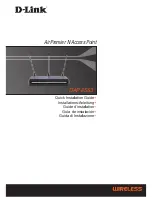
C H A P T E R
1-1
Cisco Aironet 1520 Series Outdoor Mesh Access Point Hardware Installation Guide
OL-12632-02
1
Overview
The Cisco Aironet 1520 Series Outdoor Mesh Access Point (hereafter called the access point) is a
wireless device designed for wireless client access, point-to-point bridging, point-to-multipoint
bridging, and point-to-multipoint mesh wireless connectivity. The access point is a standalone unit that
can be mounted on a streetlight pole, building wall, overhang, or a cable strand.access point
The access point (model: LAP1522) supports two radios (2.4-GHz and 5-GHz). The access point
provides client access and without the need for a license. The 5-GHz radio is dedicated to backhaul
operations to reach a wired network and the 2.4-GHz radio is used for wireless clients. The access point
can support 6 to 54 Mbps data rates.
The access point is manufactured in three configurations: cable, pole mount, and mesh. The cable
configuration has three antenna connectors on the top of the unit, can be mounted to a cable strand, and
supports power-over-cable (POC). The pole mount configuration supports two antennas on the top and
bottom of the unit. It can be mounted to a pole or building wall and supports fiber-optic networks and
several power options. The Mesh configuration has two antennas on the top and bottom of the unit. It
can be powered by AC and only supports wireless backhaul communications to reach the wired network.
It does not support hard-wired communications (cable, fiber-optic, or Ethernet) to a wired network.
The access point can also operate as a relay node for other access points not directly connected to a wired
network. Intelligent wireless routing is provided by the patented Adaptive Wireless Path Protocol
(AWPP). This enables each access point to identify its neighbors and intelligently choose the optimal
path to the wired network by calculating the cost of each path in terms of signal strength and the number
of hops required to get to a controller.
The access point is configured, monitored, and operated through a Cisco wireless LAN controller
(hereafter called a controller) as described in the Cisco Wireless LAN Controller Configuration Guide.
The Deployment Guide: Cisco Mesh Networking Solution describes how to plan and initially configure
the Cisco mesh network, which supports wireless point-to-point, point-to-multipoint, and mesh
deployments. The controllers use a browser-based management system, a command-line interface (CLI),
or the Cisco Wireless Control System (WCS) network management system to manage the controller and
the associated access points. The access point supports hardware-based advanced encryption standard
(AES) encryption between wireless nodes to provide end-to-end security.
This chapter provides information on the following topics:
•
•

































